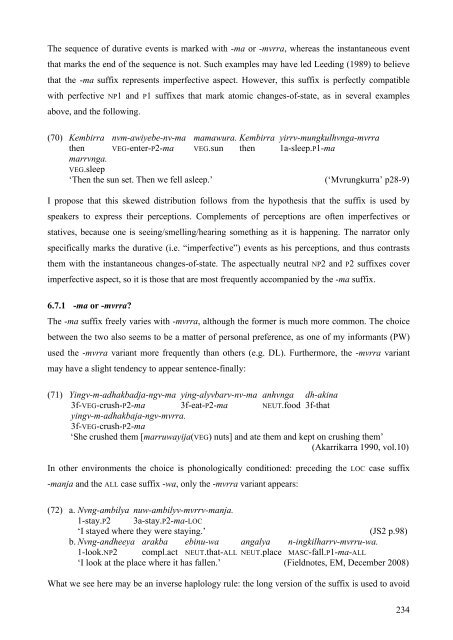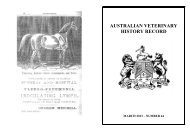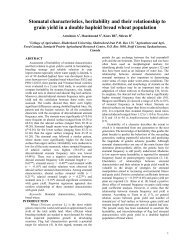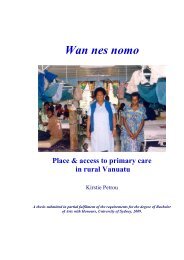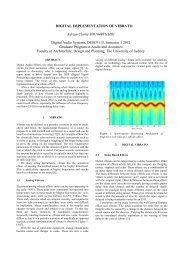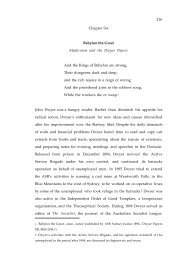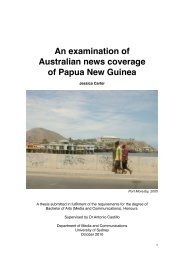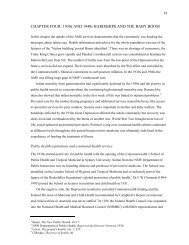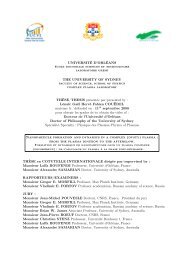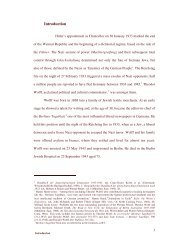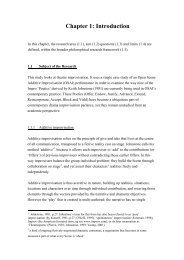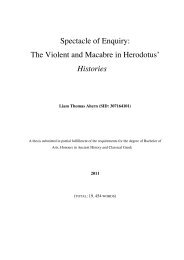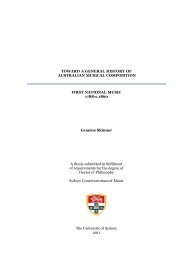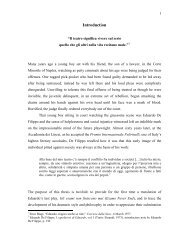Chapter 6: Tense, aspect and mood
Chapter 6: Tense, aspect and mood
Chapter 6: Tense, aspect and mood
Create successful ePaper yourself
Turn your PDF publications into a flip-book with our unique Google optimized e-Paper software.
The sequence of durative events is marked with -ma or -mvrra, whereas the instantaneous event<br />
that marks the end of the sequence is not. Such examples may have led Leeding (1989) to believe<br />
that the -ma suffix represents imperfective <strong>aspect</strong>. However, this suffix is perfectly compatible<br />
with perfective NP1 <strong>and</strong> P1 suffixes that mark atomic changes-of-state, as in several examples<br />
above, <strong>and</strong> the following.<br />
(70) Kembirra nvm-awiyebe-nv-ma mamawura. Kembirra yirrv-mungkulhvnga-mvrra<br />
then VEG-enter-P2-ma VEG.sun then 1a-sleep.P1-ma<br />
marrvnga.<br />
VEG.sleep<br />
‘Then the sun set. Then we fell asleep.’ (‘Mvrungkurra’ p28-9)<br />
I propose that this skewed distribution follows from the hypothesis that the suffix is used by<br />
speakers to express their perceptions. Complements of perceptions are often imperfectives or<br />
statives, because one is seeing/smelling/hearing something as it is happening. The narrator only<br />
specifically marks the durative (i.e. “imperfective”) events as his perceptions, <strong>and</strong> thus contrasts<br />
them with the instantaneous changes-of-state. The <strong>aspect</strong>ually neutral NP2 <strong>and</strong> P2 suffixes cover<br />
imperfective <strong>aspect</strong>, so it is those that are most frequently accompanied by the -ma suffix.<br />
6.7.1 -ma or -mvrra?<br />
The -ma suffix freely varies with -mvrra, although the former is much more common. The choice<br />
between the two also seems to be a matter of personal preference, as one of my informants (PW)<br />
used the -mvrra variant more frequently than others (e.g. DL). Furthermore, the -mvrra variant<br />
may have a slight tendency to appear sentence-finally:<br />
(71) Yingv-m-adhakbadja-ngv-ma ying-alyvbarv-nv-ma anhvnga dh-akina<br />
3f-VEG-crush-P2-ma 3f-eat-P2-ma NEUT.food 3f-that<br />
yingv-m-adhakbaja-ngv-mvrra.<br />
3f-VEG-crush-P2-ma<br />
‘She crushed them [marruwayija(VEG) nuts] <strong>and</strong> ate them <strong>and</strong> kept on crushing them’<br />
(Akarrikarra 1990, vol.10)<br />
In other environments the choice is phonologically conditioned: preceding the LOC case suffix<br />
-manja <strong>and</strong> the ALL case suffix -wa, only the -mvrra variant appears:<br />
(72) a. Nvng-ambilya nuw-ambilyv-mvrrv-manja.<br />
1-stay.P2 3a-stay.P2-ma-LOC<br />
‘I stayed where they were staying.’ (JS2 p.98)<br />
b. Nvng-<strong>and</strong>heeya arakba ebinu-wa angalya n-ingkilharrv-mvrru-wa.<br />
1-look.NP2 compl.act NEUT.that-ALL NEUT.place MASC-fall.P1-ma-ALL<br />
‘I look at the place where it has fallen.’ (Fieldnotes, EM, December 2008)<br />
What we see here may be an inverse haplology rule: the long version of the suffix is used to avoid<br />
234


